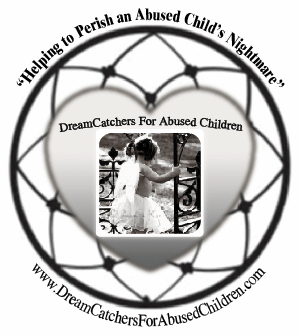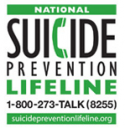Physical Abuse
Recognizing Child Abuse and Neglect: Signs and Symptoms
Author(s): Child Welfare Information Gateway
Year Published: 2006
http://www.childwelfare.gov/
****************************************************
Over one million children in the United States each year are abused in some way. Physical abuse affects children of all racial, economic, and ethnic backgrounds. It is important to note that cases of child abuse are found in every racial or ethnic background and social class. It is impossible to tell abusers from non-abusers by looking at their appearance or background.
What causes it?
Physical abuse is caused by a person’s inability to control their anger or frustration. This loss of control is usually caused by factors that have nothing to do with the child, such as job or personal stresses, loneliness, depression, anxiety, fatigue, lack of a support system, psychiatric disorders, or substance abuse. A child that is difficult because of a behavioral disorder or physical disability may also be a target for abuse if the parent is not equipped to handle these types of challenges.
A rare type of physical abuse occurs in Munchausen by proxy syndrome, a disorder in which a caregiver makes the child appear to be sick by altering medical records, test results, or making the child sick. The parent does this because they have an abnormal need for attention.
Physical abuse tends to occur at moments of great stress. Many people who commit physical abuse were abused themselves as children. As a result, they often do not realize that abuse is not appropriate discipline. Often people who commit physical abuse also have poor impulse control. This prevents them from thinking about what happens as a result of their actions. The rate of child abuse is fairly high. The most common form is neglect.
The major risk factors for child abuse include:
- Alcoholism
- Domestic violence
- Drug abuse
- Being a single parent
- Lack of education
- Poverty
However, it is important to note that cases of child abuse are found in every racial or ethnic background and social class. It is impossible to tell abusers from non-abusers by looking at their appearance or background.
What are the symptoms?
The symptoms of physical abuse include: signs of injury such as:
- Black eyes
- Broken bones that are unusual and unexplained
- Bruise marks shaped like hands, fingers, or objects (such as a belt)
- Bruises in areas where normal childhood activities would not usually result in bruising
- Bulging fontanelle (soft spot) or separated sutures in an infant’s skull
- Burn (scalding) marks, usually seen on the child’s hands, arms, or buttocks
- Choke marks around the neck
- Cigarette burns on exposed areas or on the genitals
- Circular marks around the wrists or ankles (signs of twisting or tying up)
- Human bite marks
- Lash marks
- Unexplained unconsciousness in an infant
Prolonged shaking of a child under the age of one causes a condition called shaken baby syndrome, which results in brain injury and often death. Skull fractures are also common in physically abused children.
Over the long run, abused children are more likely to use drugs, become sexually promiscuous, have low self esteem, exhibit extremely passive or aggressive behavior, have difficulty with interpersonal relationships, perform poorly in school, have frequent nightmares, and experience depression that can lead to attempted suicide. Children who are physically abused will often become abusive parents.
Consider the possibility of physical abuse when a parent or other adult caregiver:
** Offers conflicting, unconvincing, or no explanation for the child’s injury.
** Describes the child as “evil,” or in some other very negative way.
** Uses harsh physical discipline with the child.
** Has a history of abuse as a child.
How is it diagnosed?
When a child has suspicious injuries, doctors and health care professionals must carefully question those who care for the child about the source of the child’s injury. Most often, the person responsible for the abuse may not be able to explain the child’s injuries, have inconsistencies in his or her story, or appear unconcerned about the injury.
The doctor will perform a thorough physical examination and look at the child’s medical history for signs of past abuse. He or she may order some diagnostic tests, such as x-rays, to look for signs of new and old injuries.
Treatment
The child is treated for his or her injuries, which may require hospitalization. He or she may be placed with relatives or a foster care family to protect the child from further abuse. Any siblings of the child are also examined for signs of abuse.
A treatment team may consist of a pediatrician, social worker, and a psychotherapist that work together to monitor the child’s physical and mental health, with the goal of reducing the long-term effects of the abuse. There are counseling programs that can help parents learn to control their impulses when angered or frustrated.
Prevention tips
Early identification and treatment of childhood physical abuse is important to stop the pain and reduce the likelihood of long-term psychological effects.
People who suspect that a child is physically abused should call the police or report these suspicions to their local child protective services agency.
Parents should be extremely cautious before leaving their children alone in the care of any adult until they are sure the caregiver is trustworthy, loving and caring and can be fully trusted with the safety of their child.
Identification of Physical Abuse
Provides definitions of physical abuse and information to help you identify the signs and symptoms.
Child Physical Abuse
American Humane
Includes information on what to look for if you suspect physical abuse and what you can do.
Child Physical Abuse Fact Sheet (PDF – 542 KB)
National Child Traumatic Stress Network (2009)
Describes physical abuse and its signs, characteristics of children who are physically abused, and consequences for families. The factsheet also addresses how to report suspected abuse and how to support children who disclose abuse.
Diagnostic Imaging of Child Abuse
American Academy of Pediatrics, Section on Radiology
Pediatrics, 123(5), 2009
Discusses the role of diagnostic imaging in cases of child abuse to determine the extent of physical injury when abuse is present and to identify findings that point to alternative diagnoses.
Evaluation of Suspected Child Physical Abuse
Kellogg
Pediatrics, 119(6), 2007
Provides guidance for pediatricians in evaluating suspected physical abuse. Specific signs of abuse are described, along with assessment, diagnosis, documentation, treatment, and legal issues.
Physical Abuse and Neglect: A Training Curriculum
Giardino, Alexander, & Hudson (2008)
View Abstract
Teaches the socioeconomic and family factors associated with physical abuse, the signs of abuse, and how to medically evaluate and treat the abuse. A companion CD-ROM contains clinical photographs of common injuries and forms of abuse and neglect.
Physical Abuse and Neglect of Children
Dubowitz & Bennett
Lancet, 369(9576), 2007
Discusses the physician’s role in screening for risk factors and suspicious injuries that may indicate abuse or neglect.
Predicting and Responding to Physical Abuse in Young Children Using NCANDS
Palusci, Smith, & Paneth
Children and Youth Services Review, 27(6), 2005
View Abstract
Examines State and national data to identify factors present at first incident of physical abuse in order to predict future abuse.
SOURCE: http://www.childwelfare.gov/can/identifying/physical_abuse/phys_abuse.cfm




















![Validate my RSS feed [Valid RSS]](http://dreamcatchersforabusedchildren.com/wp-content/uploads/2009/10/valid-rss.png)













Ida Cross Says:
I’m a college professor. I use this web site for my class.
Posted on June 13th, 2011 at 5:27 pm
Sandra Says:
Hello Ida~ Thank you so much! We are honored that you are utilizing our website, information and resources and welcome you to continue to do so. Thank you!!
Posted on June 14th, 2011 at 12:12 pm
Arianna Hornsby Says:
I’m in the Early Childhood Education program at my school and I plan on showing this amazing website to my teacher. This website has helped me understand the different types of abuse and so much more. Thank you so much, and I will make it my duty to do what I can to fight child abuse (:
Posted on September 13th, 2011 at 6:29 pm